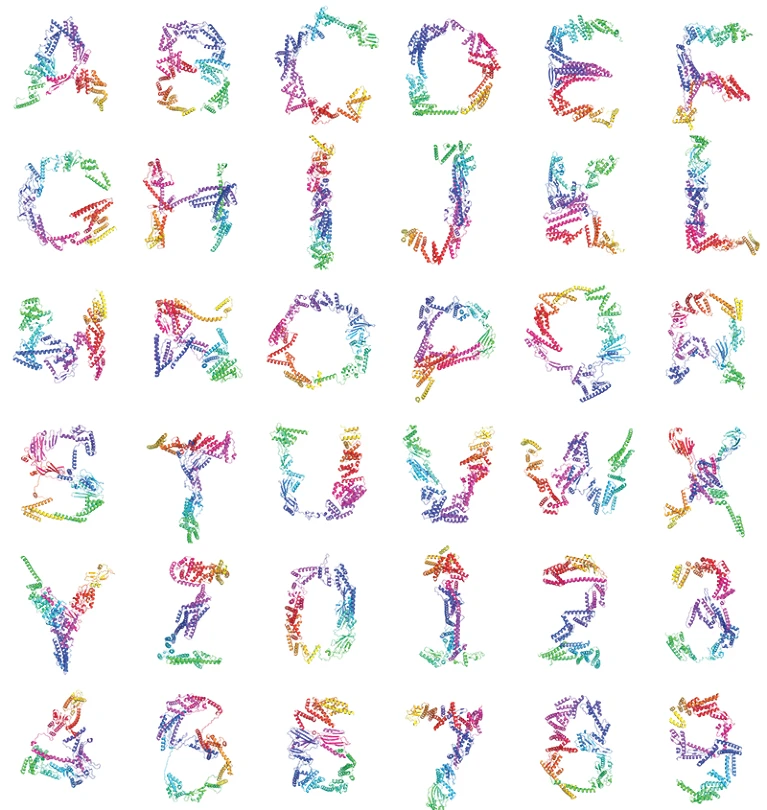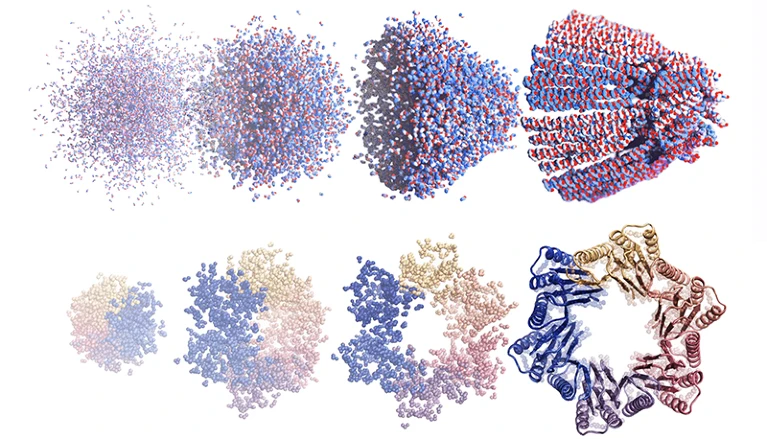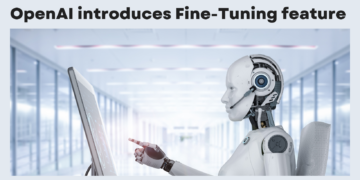Artificial intelligence (AI) tools are rapidly transforming the field of protein design, offering the potential to revolutionize medicine and create customized biomolecules. These AI in protein design approaches, such as RFdiffusion, leverage neural networks to generate realistic protein shapes based on specified criteria. With the ability to design proteins that bind tightly to biomolecules and exhibit desired qualities, researchers are witnessing a groundbreaking moment in protein design. This article explores the impact of AI tools on protein design, their applications in medicine, and the challenges that lie ahead.
The Emergence of AI in Protein Design
AI tools inspired by image synthesis software
Recent advancements in AI, particularly image synthesis software, have inspired the development of AI tools for protein design. These tools, such as RFdiffusion, apply similar conceptual approaches to generate realistic protein shapes based on specified criteria. The success of AI in synthesizing realistic images has paved the way for using similar techniques in designing biomolecules.
Overcoming limitations of previous protein design approaches
Traditional protein design approaches relied on trial and error, intuition, and a limited understanding of protein folding and functionality. However, the emergence of AI-driven models, including AlphaFold, has provided accurate predictions of protein structures from amino-acid sequences. These models have enabled the creation of proteins from scratch, addressing the limitations of previous design methods.
Introducing RFdiffusion and its capabilities
RFdiffusion, developed by a team at the University of Washington, is a neural network-based AI tool specifically designed for protein design. It leverages diffusion networks trained on thousands of real protein structures stored in the Protein Data Bank (PDB). The network starts with random noise, progressively denoised to generate new proteins. RFdiffusion offers both unconstrained protein design capabilities and the ability to condition the design process according to specific constraints, opening up new possibilities for protein design.

Protein Design as a Transformative Moment
Protein design’s potential for vaccines, therapeutics, and biomaterials
The ability to design custom proteins has immense potential in various medical applications. These AI-designed proteins can be the basis for vaccines, therapeutics, and biomaterials. The customization allows for the creation proteins tailored to specific functions and targets, leading to more effective treatments and improved healthcare outcomes.
RFdiffusion and the reproducible and robust tools it provides
RFdiffusion and similar AI tools have revolutionized the protein design process. These tools offer reproducibility and robustness, enabling researchers to generate designs with sought-after qualities. The newfound capabilities of AI in protein design have transformed the landscape and paved the way for creating a new industry focused on designing proteins.
Exploring the possibilities and challenges ahead
While AI tools have already brought significant advancements to protein design, challenges still need to be addressed. Researchers continuously explore the boundaries of diffusion methods and work towards designing more complex proteins, including antibodies. Overcoming limitations in creating vastly different proteins and expanding the criteria for protein synthesis are areas of ongoing research and development.
Designing Proteins with AI
Using AI to create protein structures based on specific constraints
AI tools like RFdiffusion allow for the creation of protein structures based on particular design constraints. Designers can input specifications into the AI tool, such as protein length and desired configurations, enabling the generation of customized proteins tailored to specific needs.
Conditioning neural networks for protein design
The conditioning process involves training neural networks to generate proteins with specific folds or interactions. By conditioning AI tools like RFdiffusion, researchers can design proteins with desired shapes, such as those that can nestle against the surface of another molecule or adopt a specific fold. This conditioning capability enhances the precision and control over the protein design process.
RFdiffusion’s success in generating diverse and realistic proteins
RFdiffusion has demonstrated its ability to generate diverse and realistic proteins. When tested without specific guidance, RFdiffusion produced protein designs that differed from those in the Protein Data Bank, indicating its capacity to generate novel protein structures. The tool’s versatility and accuracy have significantly expanded the possibilities for protein design.
AI-Designed Proteins: From Concept to Realization
Progress in manufacturing AI-designed proteins
The manufacturing process for AI-designed proteins has progressed, enabling researchers to bring these designs from concept to reality. Researchers can produce bacteria in the laboratory for further testing and validation by engineering bacteria to express the designed proteins.
Testing and validating the functionality of designed proteins
Validating the functionality of AI-designed proteins is a critical step in the process. Researchers are experimenting to determine if the proteins exhibit the desired properties and interactions. Early results have shown that a valuable fraction of AI-designed proteins performs as predicted by the software, indicating the potential for successful real-world applications.
The potential of AI-designed proteins for drug delivery and therapeutics
AI-designed proteins, particularly those that self-assemble into complex nanoparticles, hold great promise for drug delivery and therapeutics. These proteins can be engineered to deliver drugs or vaccine components, offering targeted and efficient delivery systems. AI tools like RFdiffusion have successfully designed proteins for this purpose, surpassing previous approaches.
Unleashing the Power of AI-Designed Proteins
Overcoming bottlenecks in testing and validation
As AI tools generate increasing protein designs, testing and validating their functionality becomes a challenge. The volume of designs requires significant resources and time for experimentation. Researchers are exploring ways to streamline and optimize the testing process to keep up with the design capabilities of AI tools.

Real-world applications and success rates
AI-designed proteins are already finding applications in various fields, including cancer research and immunology. The success rates of AI-designed proteins in binding to their intended targets are significantly higher than earlier methods. The potential for creating meaningful therapies and novel treatments is expanding as researchers uncover the full capabilities of AI tools.
Case study
RFdiffusion’s strong binders for immune-signaling molecules RFdiffusion has demonstrated its prowess in designing proteins that bind strongly to proteins involved in cancers, autoimmune diseases, and other conditions. Researchers can develop targeted therapies with a broader range of applications by creating strong binders for challenging immune-signaling molecules. These successes highlight the transformative potential of AI-designed proteins in medicine.
Future Improvements and Challenges
Pushing the boundaries of diffusion methods
Researchers are focused on pushing the boundaries of diffusion methods to design more complex proteins, including antibodies and other proteins with flexible loops. Incorporating flexibility into the design process remains challenging, but progress is being made to model these features effectively using AI.
Designing more complex proteins, including antibodies
The design of more complex proteins, such as antibodies, presents unique challenges due to their intricate structures and functionality. Researchers are working to enhance AI tools to handle the complexity of interlocking loops and varied shapes exhibited by these proteins. Advancements in this area will unlock further possibilities in therapeutics and disease treatment.
Overcoming limitations in creating vastly different proteins
AI tools, including RFdiffusion, tend to generate protein designs that resemble existing proteins due to the training data available. Creating vastly different proteins that do not resemble natural proteins remains a challenge. Overcoming this limitation would require a deeper understanding of the underlying physics and principles governing protein function.
Expanding Criteria and Descriptive Protein Design
The need for diverse protein design criteria
It is essential to expand the criteria beyond shape-based specifications to broaden the scope of protein design. Researchers aim to develop AI tools that can handle a broader range of protein design requirements, including proteins capable of carrying out specific reactions regardless of shape.
Using plain language text descriptions for protein synthesis
An emerging direction in protein design is using plain language text descriptions to specify protein synthesis requirements. Like image-generation tools, AI tools could potentially synthesize and test proteins based on text-based prompts. This approach opens up possibilities for faster and more intuitive protein design processes.
Training AI tools to generate designs based on text-based specifications
Researchers have begun exploring the training of AI tools to generate protein designs based on text-based specifications. This advancement enables researchers to attach descriptions to protein designs and obtain designs that fulfill specific text-based requirements. Combining language-based prompts with AI tools makes protein design more accessible and efficient.
From Structure to Function: Realizing Design Success
Converting protein structures into functional sequences
Designing a protein structure is the first step; transforming it into a functional sequence is crucial. Researchers utilize additional AI tools to determine the amino acid sequences that will fold into the desired protein structure. This conversion process ensures that the AI-designed proteins possess the desired functionality.
Verification and validation using AlphaFold predictions
To verify the accuracy of the designed protein structures, researchers employ AlphaFold, an AI model capable of predicting protein folding. By comparing the AI-designed structures with AlphaFold predictions, researchers can assess the success of the protein design process. Close alignment between the designs and predictions indicates high design success.
Bridging the gap between design success and real-world performance
While AI tools have demonstrated design success, the ultimate validation lies in how the AI-designed proteins perform in real-life applications. Rigorous testing and experimentation are necessary to determine these proteins’ efficacy, safety, and functionality. The successful translation of AI-designed proteins from concept to real-world applications will pave the way for transformative medical advancements.




























